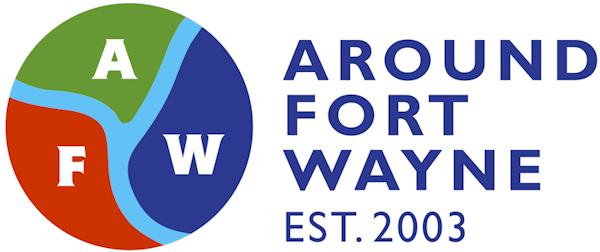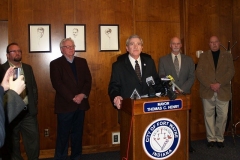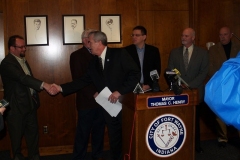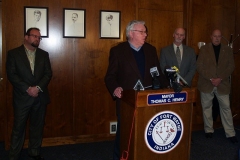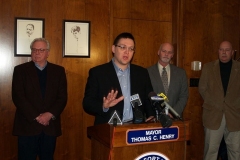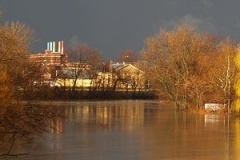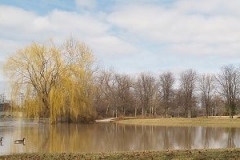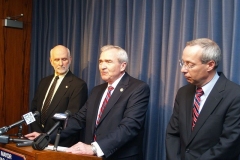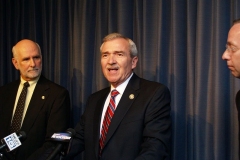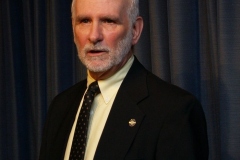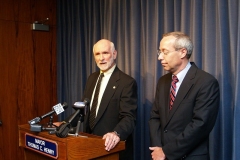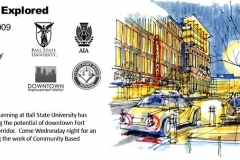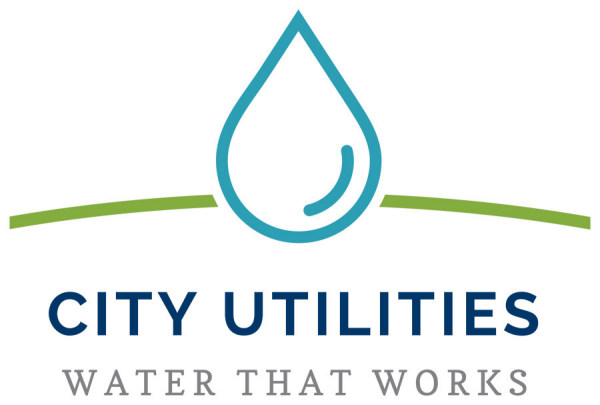
Fort Wayne City Utilities news release:
Smile on the St. Joseph River
Three Years, Zero Overflows, Nearly 33 Million Gallons Diverted
Community Encouraged to Frame-Up, Snap a Photo and Share River Pictures
(May 4, 2020) – It’s a significant milestone for the City and the St. Joseph River. Today marks three years with no Combined Sewer Overflows (CSOs) on the St. Joe. During the three years, 32.73 Million Gallons of Combined Sewage has been kept out of the river, protecting nearly 500 homes from basement back-ups and protecting neighborhoods from street flooding. Instead, the flow has gone to the pollution control plant for treatment.
The last overflow on the St. Joe River occurred on May 4, 2017. Data shows that before that date, as little as a third of an inch (.33″) over 24 hours would trigger a CSO on the St. Joe. Since May 4, 2017, we’ve had 119 rain events with more than a third of an inch, and we’ve had no overflows.
Investments and work to protect the St. Joe started in 2008, with the City’s agreement with the Federal Government to reduce the number of overflow events on the St. Joe River from 13 times per year to no more than once per year.
“This is an accomplishment for the entire community. Everyone should be proud of the efforts to protect our rivers that were vital to our past and once again central to our future,” said Kumar Menon, Director of City Utilities. “We’ve had strong support from the community throughout the challenging task of improving our sewer system. We all should celebrate the success on the St. Joe and anticipate the benefits from the current work underway to protect the St. Marys and Maumee Rivers.”
Take a Photo
To mark the accomplishment, City Utilities is asking residents to snap and share a St. Joe River photo — their favorite vista, a creative or rarely seen view, a picture of their kids, or even a selfie with the river in the background during May. Photo takers can email their snapshots to CUevents@cityoffortwayne.org. City Utilities will share select photos at cityoffortwayne.org/utilities.
Investing in Neighborhoods to protect St. Joe River
In 2015, City Utilities completed more than $12 million in investments and several years of projects to protect the St. Joe River and nearby neighborhoods.
The projects included sewer separation through the construction of new storm sewer systems, increased capacity with the addition of a new trunk line sewer, diversion structures to help route rainwater runoff, and green infrastructure. The projects kept 16 million gallons of combined sewage out of the St. Joe and protected nearly 500 homes from basement backups and street flooding.
Improvement projects included:
Kirkwood Park Sewer Separation: Construction of new storm sewers allowed for removal of stormwater runoff from the existing combined sewers in the Kirkwood Park Neighborhood. This improvement reduced CSO volume by 2.3 million gallons. (Investment -$762,000)
Penn Avenue Sewer Separation: The project provided removal of stormwater runoff from the existing combined sewer along Penn Avenue. This improvement reduced CSO volume by 40,000 gallons. (Investment -$102,000)
Woodrow Vance Sewer Separation Phase I and Phase II: The projects provided removal of stormwater runoff from the existing combined sewers in the Northside Neighborhood. This improvement reduced CSO volume by 2.7 million gallons. (Phase I Investment- $1,853,000, Phase II Investment – $886,000)
St. Joe Relief Sewer: The relief sewer picks up wastewater, rainwater and snowmelt from three combined sewer overflow outfalls, bringing them into compliance with the one overflow event per typical year requirement. An improvement to capture floating objects, such as trash and other debris, and keep them out of the river, became a part of one of the outfalls. (Investment -$4,746,700)
St. Joe Relief Sewer Connections: This project included smaller relief sewers as well as minor piping and changes to three outfalls bringing them into compliance with the one overflow event per typical year requirement. (Investment – $648,000)
St. Joe Diversion Structure: This project involved the construction of a relief sewer to connect directly with the new wet weather pump station at the Water Pollution Control Plant. The relief sewer increased the capacity in the St. Joe Interceptor to allow for the additional flow from the St. Joe Relief Sewers. The relief sewer, connections, and diversion structure reduced CSO volume by 11 million gallons. (Investment – $2,000,000)
Additional Floatables Control: to keep trash, food wrappers, and other debris from the river. This improvement has kept 10,000 pounds of floating debris from the St. Joe River. (Investment -$1,435,000)
Combined Sewer Overflows (CSO)
Combined sewers carry both sanitary and stormwater runoff. When it rains or snow melts, combined sewers often fill beyond capacity, and the stormwater and sewage mix discharges to the nearest body of water, creating a combined sewer overflow (CSO). When it’s not raining, all of the sanitary sewage goes to the sewage treatment plant.
The first sewers in Fort Wayne carried only stormwater and took it all into the rivers.
But when people began to install indoor plumbing, these “sanitary” facilities connected to the existing storm sewers and the combined sewage overflowed into the rivers. The City built a centralized sewage treatment plant in 1940. Still, sewage continued to go to the rivers when flow exceeded the capacity of the Water Pollution Control Plant. Until the Clean Water Act in 1972, Fort Wayne’s combined sewer system was state-of-the-art, and discharges to the rivers were an acceptable practice allowed by federal law.
As our country became more environmentally conscious, laws and regulations changed, and the combined sewer system was no longer an accepted practice. In 1970, President Richard Nixon established the Environmental Protection Agency, and under his presidency, the regulations of the Clean Water Act became law in 1972.
Consent Decree
The City is under a court order called a Consent Decree. It requires a significant reduction in the number of combined sewer overflows going to our rivers, a reduction in sewage that backs up into homes during wet weather events, an elimination of sanitary sewer overflows, and to operate and maintain the sewer system’s reliability through continued repair and rehabilitation.
The Consent Decree requires City Utilities to reduce the number of overflow events from the current average of 71 times a year on our rivers to one overflow event in a typical year to the St. Joseph River and four overflow events in a typical year on the St. Marys and Maumee Rivers.
Sewer Advisory Group
In 1995, City Utilities established the Sewer Task Force. The group was assembled with residents from neighborhoods across the City to study, provide input, and assist City Utilities in moving forward with efforts to reduce the likelihood of having sewage backups into homes during wet weather. This group of dedicated citizens has been helpful and instrumental in implementing compliance efforts required by the Consent Decree.
After the Sewer Task Force provided a set of recommendations to City Utilities in 1997, the group continued to be active, and broadened its focus, becoming the Utility Advisory Group, to facilitate community input on topics in the water, stormwater and sewer utilities.
